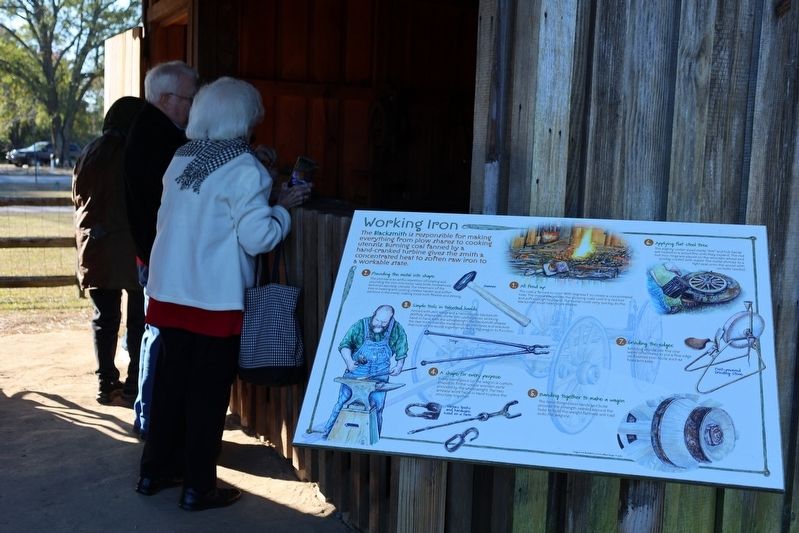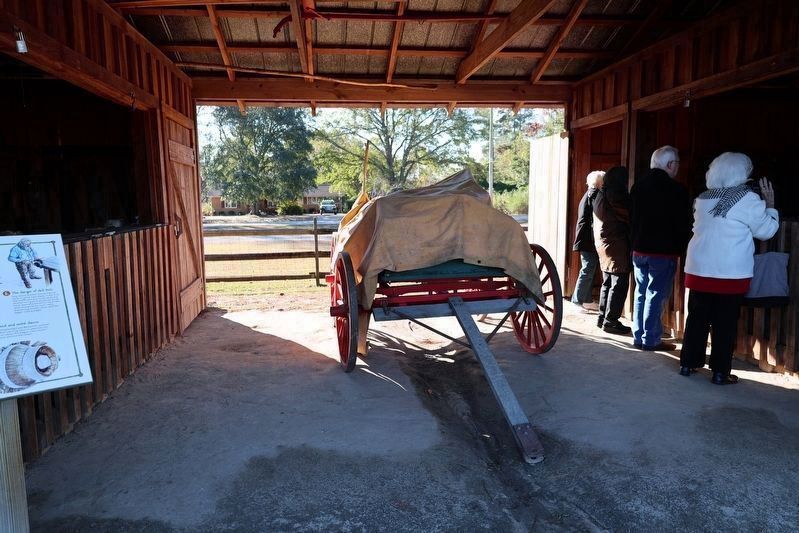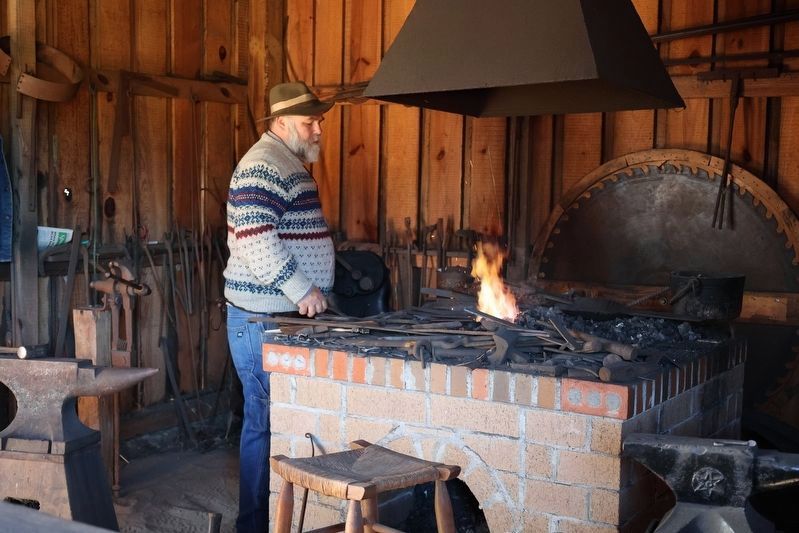Conway in Horry County, South Carolina — The American South (South Atlantic)
Working Iron
— L.W. Paul Living History Farm —
1. All fired up
The coal is fanned to over 1800 degrees F. to create a concentrated heat. The iron is placed into the glowing coals until it is red-hot and soft enough to pound. The metal cools very quickly so the blacksmith must heat-work-repeat.
2. Pounding the metal into shape
The process is an artful repetition of heating and pounding the iron into tools, nails, bolts, horseshoes, and even specialty utensils. The treatment of the iron in heating and cooling creates harder and softer sections in the metal, making tools both flexible and strong.
3. Simple tools in talented hands
Armed with skill, tongs, and a hammer, the blacksmith skillfully shapes raw metals into useful pieces. Working hand-in-hand with the wheelwright, the blacksmith shapes the raw metal into the metal bindings, iron tires, and brackets that hold all the wood together allowing the wagon to function.
4. A Shape for every purpose
Every metal piece on the wagon is custom-shaped to fit the unique wooden parts provided by the Wheelwright. The two artisans work hand-in-hand to piece the structure together.
5. Banding together to make a wagon
The hand-forged iron bands and bolts provided the strength needed around the hubs to hold the weight farmers would load onto the wagon.
6. Applying flat steel tires
The slightly under-sized metals "tire" and hub bands are heated in a wood fire until they expand. The red hot iron rings are placed on the wooden wheel and quickly cooled with water. The metal shrinks to a tight seal onto the wood with no bolts needed.
7. Grinding the edges
Grinding stones like this one were often used to put a fine edge on finished iron tools, such as hoes and axes.
Erected by L.W. Paul Living History Farm.
Topics. This historical marker is listed in these topic lists: Education • Industry & Commerce • Parks & Recreational Areas.
Location. 33° 54.308′ N, 79° 2.917′ W. Marker is in Conway, South Carolina, in Horry County. Marker can be reached from Harris Short Cut Road west of U.S. 701, on the right when traveling west. Touch for map. Marker is at or near this postal address: 2279 Harris Short Cut Rd, Conway SC 29526, United States of America. Touch for directions.
Other nearby markers. At least 8 other markers are within walking distance of this marker. Wood to Wagon (here, next to this marker); Gristmill (a few steps from this marker); Making the Cut (a few steps from this marker); Raising Cane (within shouting distance of this marker); Raising Tobacco (within shouting distance of this marker); L.W. Paul Living History Farm (about 300 feet away, measured in a direct line); The Legacy of Farm to Table (about 300 feet away); Farm House (about 300 feet away). Touch for a list and map of all markers in Conway.
Also see . . . The L.W. Paul Living History Farm. Horry County Museum (Submitted on December 5, 2023.)
Credits. This page was last revised on December 5, 2023. It was originally submitted on December 4, 2023, by Sandra Hughes Tidwell of Killen, Alabama, USA. This page has been viewed 38 times since then and 9 times this year. Photos: 1, 2, 3. submitted on December 4, 2023, by Sandra Hughes Tidwell of Killen, Alabama, USA. • Bernard Fisher was the editor who published this page.


